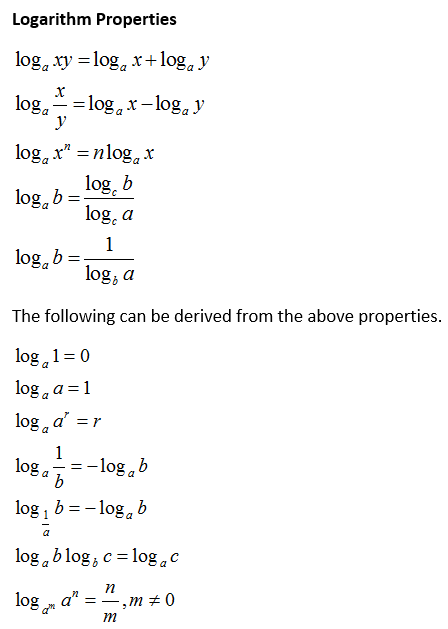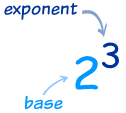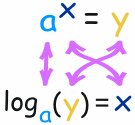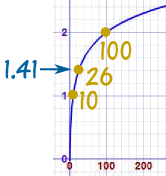Mathematics: solving logarithms before the time of calculators.
In mathematics, we are currently studying the topic of logarithms. Log, simply put, is the inverse of exponents and is generally used to solve calculations that have rather large powers. This topic is quite complex, with a heavy dependance on scientific calculators to solve the majority of problems – in our modern society, all log values are easily found with the use of a calculator. Keeping this in mind, one is left to ponder how mathematicians of the 1600’s and 1700’s were able to solve such complicated mathematics without such technology. Firstly though, a brief history regarding logarithms. According to SOSMATH (1999), the method of logarithms was first publicized by a man known as John Napier, in 1614. However, at a similar time, a Swiss man named Joost Burgi had also been working on a concept similar to the idea of log. These two men had different ideas regarding log. Napier’s method of logarithms was heavily related to algebra, while Burgi’s approach was much mor geometric. Although these men are somewhat credited with the discovery of logarithms, the possibility of defining exponents with the use of logarithms was first proposed by a man named John Wallis in 1685. Overall though, the original discovery of logarithms can be contributed to Napier and Burgi – it was Wallis who discovered its uses in terms of exponents. Now, how did people use log to solve problems, when they did not have a the technology that is present today? Essentially what they did was to use something called a log table. A log table, simply put, is a list of common logarithms (with base 10) for numbers between 1 and 10. Therefore, mathematicians simply re-wrote their complicated logarithms into logarithms with base of 10. Thus, they could use the log table, find their logarithm, and the table would contain that log value converted into a number. In relation to this, when solving these difficult logarithms, mathematicians followed a number of rules, known as the law of logarithms.
Introduction to Logarithms
In its simplest form, a logarithm answers the question:
How many of one number do we multiply to get another number?
Example: How many 2s do we multiply to get 8?
Answer: 2 × 2 × 2 = 8, so we needed to multiply 3 of the 2s to get 8
So the logarithm is 3
How to Write it
We write "the number of 2s we need to multiply to get 8 is 3" as:
log2(8) = 3
So these two things are the same:
 |
The number we are multiplying is called the "base", so we can say:
- "the logarithm of 8 with base 2 is 3"
- or "log base 2 of 8 is 3"
- or "the base-2 log of 8 is 3"
Notice we are dealing with three numbers:
- the base: the number we are multiplying (a "2" in the example above)
- how many times to use it in a multiplication (3 times, which is the logarithm)
- The number we want to get (an "8")
More Examples:
Example: What is log5(625) ... ?
We are asking "how many 5s need to be multiplied together to get 625?"5 × 5 × 5 × 5 = 625, so we need 4 of the 5s
Answer: log5(625) = 4
Example: What is log2(64) ... ?
We are asking "how many 2s need to be multiplied together to get 64?"2 × 2 × 2 × 2 × 2 × 2 = 64, so we need 6 of the 2s
Answer: log2(64) = 6
Exponents
Exponents and Logarithms are related, let's find out how ... |
The exponent says how many times to use the number in a multiplication.
In this example: 23 = 2 × 2 × 2 = 8
(2 is used 3 times in a multiplication to get 8)
|


The logarithm tells us what the exponent is!
In that example the "base" is 2 and the "exponent" is 3:
What exponent do we need
(for one number to become another number) ?
(for one number to become another number) ?

Example: What is log10(100) ... ?
102 = 100
So an exponent of 2 is needed to make 10 into 100, and:
log10(100) = 2
Example: What is log3(81) ... ?
34 = 81
So an exponent of 4 is needed to make 3 into 81, and:
log3(81) = 4
Common Logarithms: Base 10
Sometimes a logarithm is written without a base, like this:
log(100)
This usually means that the base is really 10.
On a calculator it is the "log" button.
It is how many times we need to use 10 in a multiplication, to get our desired number.
Example: log(1000) = log10(1000) = 3
Natural Logarithms: Base "e"
Another base that is often used is e (Euler's Number) which is about 2.71828.
On a calculator it is the "ln" button.
It is how many times we need to use "e" in a multiplication, to get our desired number.
Example: ln(7.389) = loge(7.389) ≈ 2
Because 2.718282 ≈ 7.389But Sometimes There Is Confusion ... !
Mathematicians use "log" (instead of "ln") to mean the natural logarithm. This can lead to confusion:| Example | Engineer Thinks | Mathematician Thinks | |
|---|---|---|---|
| log(50) | log10(50) | loge(50) | confusion |
| ln(50) | loge(50) | loge(50) | no confusion |
| log10(50) | log10(50) | log10(50) | no confusion |
Logarithms Can Have Decimals
All of our examples have used whole number logarithms (like 2 or 3), but logarithms can have decimal values like 2.5, or 6.081, etc.
Example: what is log10(26) ... ?
 |
Get your calculator, type in 26 and press log Answer is: 1.41497... |
(10 with an exponent of 1.41497... equals 26)
| This is what it looks like on a graph: See how nice and smooth the line is. |
 |
Negative Logarithms
| − | Negative? But logarithms deal with multiplying. What could be the opposite of multiplying? Dividing! |
A negative logarithm means how many times to
divide by the number.
Example: What is log8(0.125) ... ?
Well, 1 ÷ 8 = 0.125,
So log8(0.125) = −1
Or many divides:Well, 1 ÷ 8 = 0.125,
So log8(0.125) = −1
Example: What is log5(0.008) ... ?
1 ÷ 5 ÷ 5 ÷ 5 = 5−3,
So log5(0.008) = −3
1 ÷ 5 ÷ 5 ÷ 5 = 5−3,
So log5(0.008) = −3
It All Makes Sense
Multiplying and Dividing are all part of the same simple pattern.Let us look at some Base-10 logarithms as an example:
| Number | How Many 10s | Base-10 Logarithm | ||
|---|---|---|---|---|
 |
.. etc.. | |||
| 1000 | 1 × 10 × 10 × 10 | log10(1000) | = 3 | |
| 100 | 1 × 10 × 10 | log10(100) | = 2 | |
| 10 | 1 × 10 | log10(10) | = 1 | |
| 1 | 1 | log10(1) | = 0 | |
| 0.1 | 1 ÷ 10 | log10(0.1) | = −1 | |
| 0.01 | 1 ÷ 10 ÷ 10 | log10(0.01) | = −2 | |
| 0.001 | 1 ÷ 10 ÷ 10 ÷ 10 | log10(0.001) | = −3 | |
| .. etc.. | ||||
No comments:
Post a Comment